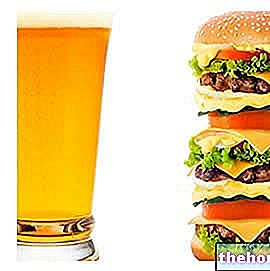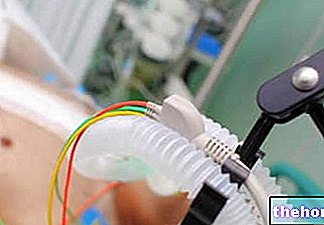What's this ?
Alcoholic hepatitis is an inflammatory disease of the liver caused by long-term alcohol abuse. In most cases it is accompanied by an excessive accumulation of triglycerides in the liver (hepatic steatosis); this is why we speak more correctly of alcoholic steatohepatitis.
It should be noted, however, that the onset of alcoholic fatty liver disease tends to precede hepatitis by many years; moreover, while steatosis is a particularly frequent finding in alcoholics and heavy drinkers (60-100% of cases), the " alcoholic hepatitis develops in a more limited number of subjects (20-30% of cases).
Alcoholic liver lesions therefore tend to follow a well-defined chronological manifestation: steatosis usually precedes alcoholic hepatitis and this usually precedes cirrhosis (10-20% of cases). Sometimes, to tell the truth, there is a direct passage from steatosis alcoholic fibrosis, then cirrhosis in the absence of a frank alcoholic hepatitis acting as an intermediate stage.

Risk factors
In addition to alcoholism, the main risk factors called into question are the patient's nutritional status and his genetic and metabolic traits. In general, a linear correlation can be observed between the extent and duration of alcohol abuse and the development of liver disease; however, there are exceptions, due precisely to the aforementioned metabolic and genetic variability of the population; consequently not all people who abuse alcohol develop significant liver damage.
How many grams of alcohol do you take with a drink?
Specify the quantities of alcohol consumed
ml of beer (3.5% alcohol)
ml of beer (5% alcohol)
ml of beer (7.5% alcohol)
ml of wine (10% alcohol)
ml of wine (12.5% alcohol)
ml of wine (15% alcohol)
ml of wine-based cocktails (20% alcohol)
ml of liqueurs (30% alcohol)
ml of liqueurs (40% alcohol)
ml of liqueurs (60% alcohol)
ml of liqueurs (70% alcohol)
Grams of alcohol taken:
Therefore, the statement that to develop alcoholic hepatitis it would be necessary to consume 80 g of alcohol per day for at least a decade, while the threshold for developing cirrhosis would be 160 g per day for 8-10 years, is completely indicative. years.
Finally, the greater susceptibility of women to alcoholic liver disease should be noted, even when the intake doses are adequately corrected (30% less depending on the lower metabolic capacity).
Symptoms
The clinical manifestations of alcoholic hepatitis can vary greatly in relation to the intensity of the inflammation, which can occur in the acute or chronic form. In the first case there is abdominal pain, accompanied by fever, lack of appetite, neutrophilic leukocytosis and the signs and symptoms of cirrhosis and its complications, ascites, jaundice, hepatic encephalopathies, gastroesophageal bleeding from rupture of varices of the esophagus, neutrophilic leukocytosis and increased prothrombin time. In the chronic form of alcoholic hepatitis the symptoms are more nuanced: general weakness and malaise, nausea, vomiting, weight loss, fever and hepatic pain (pain in the epigastrium and right hypochondrium). The plasma increases in biochemical markers of liver distress are also smaller.
Complications
Beyond the certainly not negligible risk (10-15%) of losing life following an acute episode of hepatitis, the most known and fearful complication of this disease is liver cirrhosis.
Prolonged alcohol intake fills liver cells with fat, until they burst and thus put a strain on the extraordinary regenerative capacity of this organ. Thus, if subjected to repeated alcoholic insults over time, the liver cells no longer regenerate, limiting themselves to scarring (liver fibrosis); the onset of these scar lesions is favored by the inflammatory process that characterizes alcoholic hepatitis. Over time, the fibrosis progresses and worsens, involving more and more important areas of the organ to the point of heavily subverting its architecture and functionality: in this case we speak of alcoholic cirrhosis. Considering the prominent role of the liver in the body's metabolism, cirrhosis causes rather serious imbalances, so much so that in an advanced phase the only solution to save the patient's life is a liver transplant. Furthermore, cirrhosis is accompanied by an important risk of evolution into hepatocarcinoma.
Healing times and treatments
See also: Drugs for Alcoholic Hepatitis
Unlike what has been seen for alcoholic fatty liver disease, which usually resolves within 10-14 days from the start of alcohol abstention, alcoholic hepatitis takes many weeks or months to heal. In addition to the total abstention from the consumption of alcoholic beverages - an objective also pursued through specific drugs for the treatment of alcoholism - it is important to adopt a light and balanced diet, possibly supported by vitamin supplements according to medical indications. The use of corticosteroids may be necessary to resolve the inflammatory process associated with the most severe forms of alcoholic hepatitis. The prognosis and the hypotheses of reversibility of liver damage are variable and depend on the severity of the inflammatory process.




























